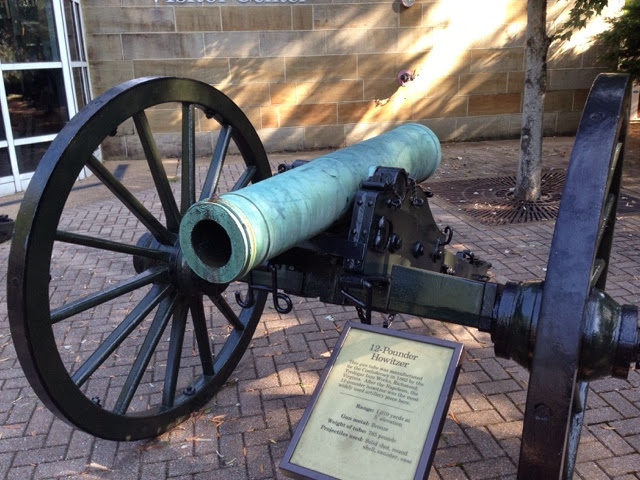It's easy to forget the important role that navies played in the American Civil War. Ask the man on the street if he has heard of the Battle of Gettysburg and his answer most certainly will be in the affirmative. However, ask the same person what he knows about the naval engagement at Memphis or the Battle of Mobile Bay. I'm not certain that the man on the street, unless he is a Civil War buff, will know anything about them. The United States Navy played a major role in Lincoln's war plan. Without it, the Anaconda Plan (squeezing the Confederacy to death by stopping its supplies) would not have even come to reality. The US Navy's Blue Water (ocean) Fleet was called upon to blockade the CS ports and prevent the South from receiving supplies from Europe. Without the US Navy's Brown Water (river) Fleet, U.S. Grant's plan to take Vicksburg would have been dramatically altered and, perhaps, unsuccessful. It cannot be denied that the US Navy provided valuable service during the Civil War.
As with those of the land forces, naval battle tactics in the mid 19th century had been altered by technology. Steam engines and improvements in the range and accuracy of artillery and small arms changed the way that navy's fought. For the most part, gone were the days of swashbuckling boarding parties. Still, navy's armed sailors to prepare to defend against and repel boarders. For centuries prior to 1861 sailors fought with a short edged weapon known as a cutlass. During the Civil War, sailors were still issued this weapon.
The weapon pictured above is a US Model 1860 Naval Cutlass. This example was made by the Ames Manufacturing Company of Chicopee, Massachusetts in 1863. Like all cutlasses, it is short-bladed as it was designed for fighting in the close quarters of ship. A sailor swinging the 24.5 inch blade is less likely to catch same in rigging and on other shipboard obstacles than he would a longer blade. The sheet brass handguard provides him with excellent hand protection as it covers entirely the leather and twisted wire grip. It was once housed in a leather scabbard secured to the sailors belt by a loop.
This sword is not pristine. Like I have stated before, I don't like pristine antique weapons. Rather, I prefer those that have some history. This sword was issued. It bears a rack and sword number hand etched on the inside if the guard. Unfortunately, these numbers do not tell us to which ship it was issued.
The sword's blade is darkened with age and it's metal is mottled with rust pitting. At some point in history, the tip of its blade was broken and a new point reformed - perhaps by the ship's armourer.
I bought this sword earlier this year. In the past, I really haven't had much interest in Civil War naval weapons. However, I have always liked this pattern, because it was designed to be used in combat. In other words, this sword is not a dress weapon. It is my first naval sword and honestly has spurred an interest for me in the subject.
I want to provide a few notes for the amateur collector. The pattern 1860 cutlass is readily available on the market at reasonable prices. Most originals have banged up guards and are missing their leather grip covers and wire wrap. Examples with clean blades command higher prices. Examples with original scabbards are less common, but can be found. Due to the rarity of the leather scabbard surviving, complete examples obtain much higher prices. Beware that this sword has been mass produced. Based upon my own examination, in general, of antique swords and reproductions, I find that modern reproductions have heavy, less flexible blades and modern brass is more yellow and thicker that that of an original. Given the extent that this sword has been reproduced, I recommend that the novice avoid buying through an online auction. Instead, the novice should purchase from a reputable dealer who guarantees authenticity.

















































